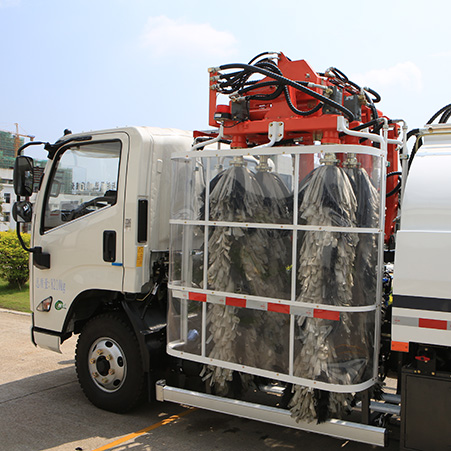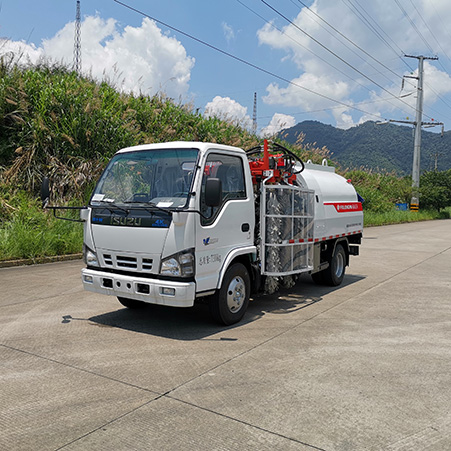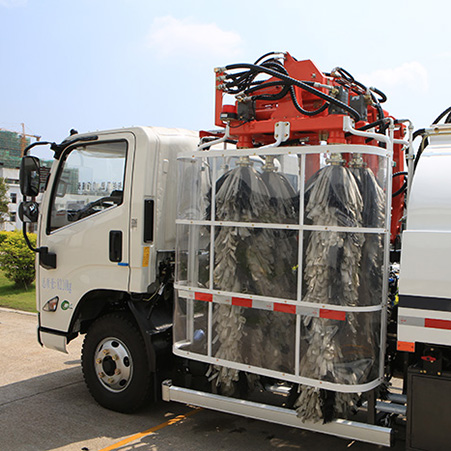One often overlooked yet crucial aspect of road maintenance is the cleanliness and upkeep of guardrails. Enter the road guardrail cleanout vehicle that plays a vital role in ensuring our highways remain safe and clean.
These specialized vehicles are designed to clean debris, dirt, and other obstructions from guardrails, which not only enhances the aesthetic appeal of our roads but also ensures that guardrails function correctly in protecting motorists. In this article, we will delve into the function, design, and impact of road guardrail cleanout vehicles.

The Function of Road Guardrail Cleanout Vehicles
At their core, road guardrail cleanout vehicles are designed to perform a simple yet critical task: clean guardrails. However, the actual function of these vehicles is far from simple. Here’s a closer look at how they operate:
Debris Removal
Guardrails often accumulate dirt, debris, and even litter over time. This buildup can impede the guardrail’s ability to perform its primary function of protecting vehicles during collisions. Cleanout vehicles use high-powered brushes, vacuums, and water jets to remove this debris effectively.
Maintenance of Guardrail Integrity
Beyond cleaning, these vehicles also play a role in maintaining the structural integrity of guardrails. Regular cleaning prevents corrosion and damage caused by accumulated debris, ensuring that guardrails remain sturdy and reliable.
Enhancing Road Aesthetics
Clean guardrails contribute to the overall aesthetic appeal of highways and roads. While this might seem like a minor benefit, well-maintained roads can positively impact public perception and the overall driving experience.

The Design of Road Guardrail Cleanout Vehicles
Specialized Cleaning Mechanisms
These vehicles are equipped with advanced cleaning mechanisms, including rotating brushes, high-pressure water jets, and powerful vacuums. These tools work in unison to remove even the most stubborn debris from guardrails.
Maneuverability
Guardrails are often located in areas that are difficult to access. Cleanout vehicles are designed with enhanced maneuverability, allowing them to navigate tight spaces and complex road configurations with ease. This ensures that all sections of the guardrail can be reached and cleaned.
Robust Construction
Given the demanding nature of their job, road guardrail cleanout vehicles are built to withstand harsh conditions. They are constructed using durable materials that can handle the rigors of road maintenance, ensuring longevity and reliability.
Automation and Efficiency
Modern cleanout vehicles are equipped with automated systems that enhance efficiency. Sensors and cameras help operators navigate and clean guardrails more effectively, reducing the time and effort required for maintenance.

The Impact on Road Safety and Maintenance
The impact of road guardrail cleanout vehicles on road safety and maintenance is significant and multifaceted.
Enhanced Road Safety
Clean guardrails are more effective in performing their protective function. By removing debris and preventing corrosion, cleanout vehicles ensure that guardrails remain strong and capable of absorbing impact during accidents. This directly contributes to the safety of motorists.
Cost Savings
Regular maintenance of guardrails using cleanout vehicles can lead to substantial cost savings. By preventing damage and prolonging the lifespan of guardrails, these vehicles reduce the need for costly repairs and replacements. This, in turn, alleviates the financial burden on municipalities and taxpayers.
Environmental Benefits
Road guardrail cleanout vehicles also have a positive environmental impact. By removing litter and debris from guardrails, these vehicles prevent pollutants from entering nearby ecosystems. Additionally, the use of efficient cleaning mechanisms reduces water and energy consumption, further minimizing their environmental footprint.
Improved Public Perception
Well-maintained roads and guardrails contribute to a positive public perception of road authorities and municipalities. This fosters trust and confidence in the management of public infrastructure, enhancing community satisfaction and engagement.
Conclusion
Road guardrail cleanout vehicles are a testament to the ingenuity and dedication involved in maintaining our roadways. Their specialized function, innovative design, and significant impact on road safety and maintenance make them indispensable assets in the realm of road maintenance.
As we continue to strive for safer and more efficient road networks, the role of these vehicles will only become more critical. By understanding and appreciating the function, design, and impact of road guardrail cleanout vehicles, we can better support and advocate for the technologies and practices that keep our roads safe and clean.






